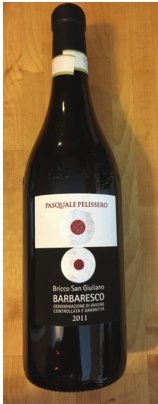 A breakdown of Italian Wine Labeling
A breakdown of Italian Wine Labeling If you’re asking a friend or colleague for tips or pointers on which Italian wines to buy, and the person you’re speaking to is a self-proclaimed “Italian wine expert,” you may consider taking their selections with a grain of salt.
I phrase it this way, because Italian wine is so notoriously difficult to compartmentalize or generalize, that those who are truly the best would never boast such a peacocked statement. Experts know full well “The Boot” has eccentricities and its own alternative wine facts, waiting for you around every hairpin on a strade statali.
There’s no quick way to summarize Italian wine. Forget it. But the romantic in this author loves that element, because that means there are infinite and evolving stories to learn and share.
Let’s start with some core facts about Italian wine. Nearly 1,000 grape varieties are used to produce Italian wine. Anyone who learns about ampelography — the study, identification and classification of grape vines — will tell you that this number will never be exact.
And for those used to reading the label to find recognizable grapes, Italy’s not going to be very helpful in this matter. Although wineries, and regions that depend on the export-driven grocery store consumer, will put the grape on the label to facilitate sales, it’s not very common.
Instead, Italian wines are categorized in three important tiers that are vital to the American market. A word of warning, it’s very crucial to know that being a part of one of them neither demeans it, nor elevates the wine’s quality.
The “top” level is “Denominazione di Origine Controllata e Garantita” or DOCG. In English, this stands for Designation of Guaranteed Origin. There are 74 DOCGs in Italy, including true titans of wine, like Chianti Classico, Barolo, and Brunello di Montalcino.
The next level is “Denominazione di Origine Controllata” or DOC. This translates to Designation of Origin. There are roughly 330 DOCs in Italy. The difference between DOCG and DOC wines is that a wine from a DOCG location is fairly more elevated than its counterpart.
But remember, these are demarcations via the legal process of making boundaries, so it’s fair to assume that politics that might just play into this; similar to gerrymandering in the U.S.
So, on one hand you have DOCGs like Ruché di Castagnole Monferrato or Primitivo di Manduria Dolce Naturale that produce wines of moderate and small quality, and on the other, there are DOCs like Aglianico del Vulture and Etna, which produce game-changing red wine from southern Italy.
An important third category emerged in 1992, and is called “Indicazione Geografica Tipica.” The IGT translates into Typical Geographical Indication.
The IGT came into existence essentially as an evolutionary step to create a codification for great wine that didn’t fit in to Italy’s DOC/ DOCG regulations. You’re more likely to see the name of the grape on the label of an IGT wine and it’s certainly more common to see grapes of French origin like cabernet sauvignon, syrah, and merlot in these wines.
An impressive example of a nice, affordable IGT wine is the Pietranera Toscana, 2015. A straight varietal sangiovese at $17, is far better than most chianti, if you’re generally a cabernet sauvignon drinker. It’s a fruit bowl of tart cherries, plums, raspberries, with an element of candied, black-fruit.
One location that more than deserves the elevated DOCG status is barbaresco. The 2011 Pasquale Pelissero Barbaresco from the Bricco San Giuliano vineyard is a shining example. Cherry, roses and coffee notes co-mingle in this surprisingly nuanced $40 bottle. Its full-bodied structure screams for a feast of braised beef. It’s a great special-occasion wine that is worth poking around for at your favorite independent retailer. One of the more interesting DOC wines I’ve had lately is from the tiny region of Oltrepo Pavese in Lombardy. A white wine made from the pinot noir grape. What’s that? Frecciarossa makes a pinot nero bianco built on expressive flavors like apples, pears, and succulent melon? It’s peculiar that a red grape makes white wine. It doesn’t happen often, unless you’re in Champagne, but there are no bubbles here, just refreshing and savory fruit with a great value ($20). A strong white wine, built for the summer.
Moving to the east of Lombardy into Alto Adige is a price-comparative chardonnay by Elena Walch, an important champion of Northeastern Italian wines. One of the better chardonnay values I’ve had, $20, is pretty damn balanced. Spring and autumn aren’t always ideal for ripening wine grapes. It’s cold at night and not often warm during those summer days. It shows in this wine, a reflection of brightness and length.
Italian wine is often difficult to robustly comprehend. Just remember that there’s no test and it’s certainly okay to not really sweat what’s on the label. If you like dry red wines that are often both tart and ripe, you’re in the right country. If you like white wines with a hint of complexity but half the price of French wines from Burgundy, you’re also where you need to be.
Justin King is a certified sommelier and is the owner of Bridge Street Social, a wine and cocktails-focused restaurant in DeWitt.
Support City Pulse - Donate Today!
Comments
No comments on this item Please log in to comment by clicking here